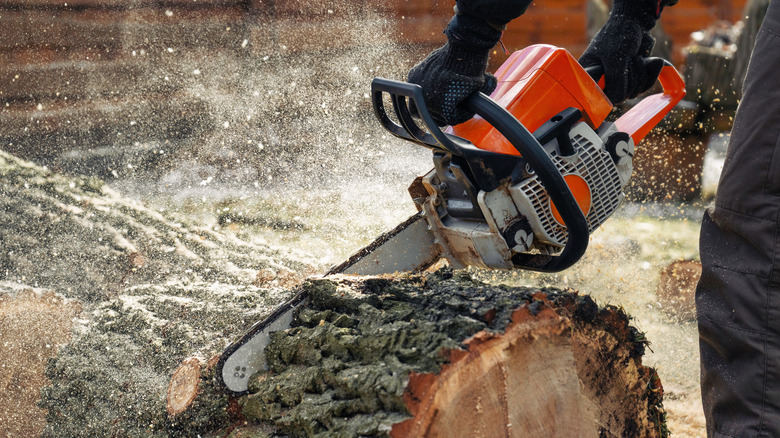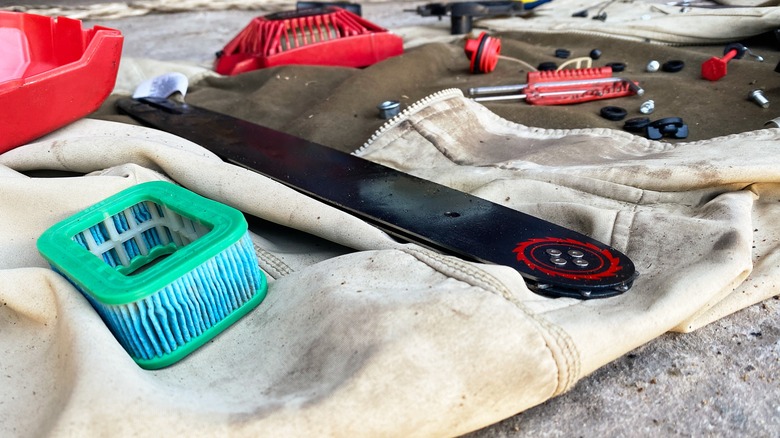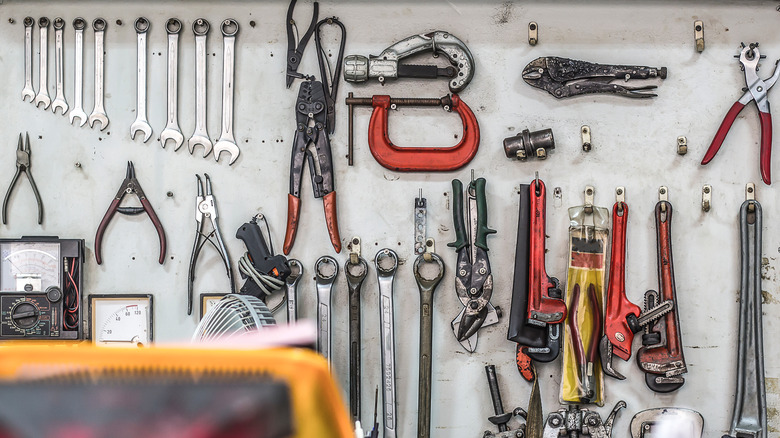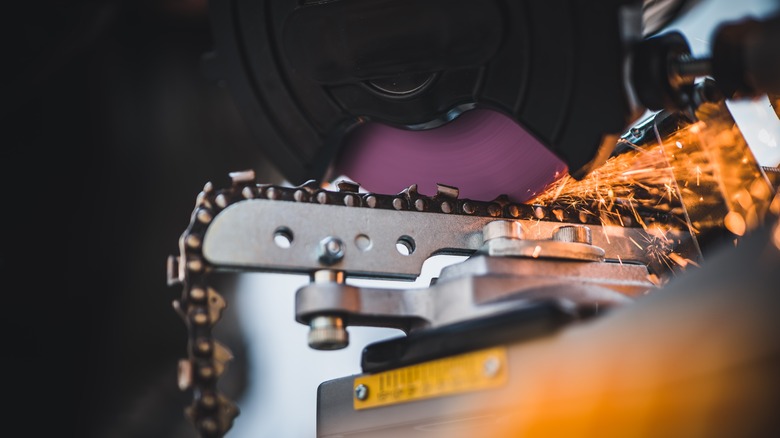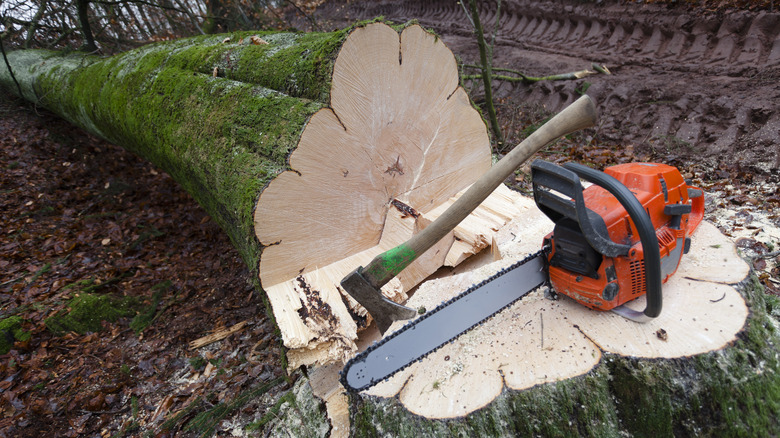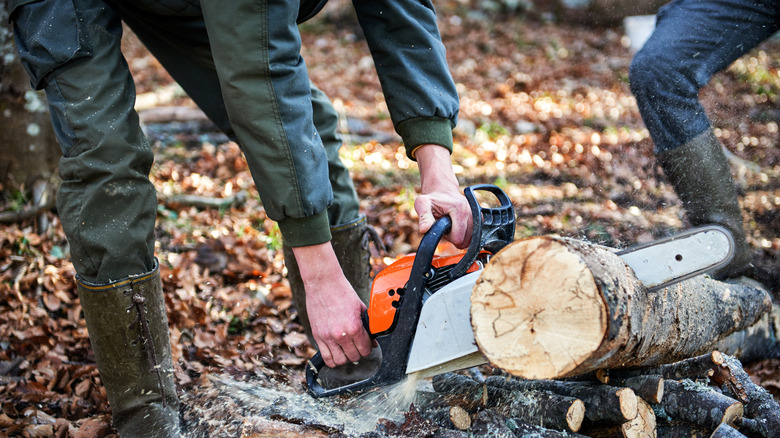5 Chainsaw Maintenance Tips & Tricks
Among power tools, chainsaws are one of the most heavy-duty ones out there. Designed to withstand the elements, it's unsurprising that it may require regular TLC to keep running smoothly and safely. Chainsaws are great for everything from woodworking and casual landscaping to more critical uses like clearing roads during calamities or forest management. In addition, there are also several types of chainsaws in terms of size, power source, and design, like electric chainsaws, battery-powered chainsaws, or gas-powered chainsaws. In fact, depending on if you want to reach difficult places or just need a casual cutting companion for DIY home projects or camping, you can even get a pole or mini chainsaw to do the job.
When used regularly, chainsaws often come into contact with a variety of surfaces, which can range from household dust to plant material like bark or sap. Although most chainsaws are designed to work with most of these materials, there is a possibility that they seep into places that they shouldn't and cause havoc with your chainsaw's parts. Because of this, it's always good to craft the ideal maintenance schedule and exact routine necessary to keep your particular chainsaw working properly. So, whether you're using your chainsaw for work or casually at home, there are plenty of tips and tricks that can work for you.
Clean your chainsaw during and after use
Although chainsaws are generally durable, there are moments when they need a little help to keep going. For example, when you're chopping wet wood, the little bits of sawdust and debris can get caught up in the chain, instead of being blown away like usual. While a few pieces here and there won't cause any concern, a ton of them could stick to the chain and make it less effective. To keep your chainsaw running well when you're slicing wet things, don't forget to wipe these bits off every now and then, so they don't inhibit the airflow and mess with its temperature management system.
By regularly cleaning your chainsaw after use, you can easily spot any issues with its individual components. Just make sure to completely switched it off to prevent accidents, like cutting your fingers. Depending on your chainsaw, this can mean removing the battery, turning off its engine, and unplugging it. Not to mention, you can apply the chain brake when possible to keep it stationary.
To begin cleaning, use a damp cloth to wipe down the exterior from any dust or other small particles that have built up. Then use a compressed air or cleaning brush to get any debris off the chainsaw's air intake slits and guide bar. Depending on if your chainsaw is powered by oil, battery, or electricity, you might also need to do some degreasing, cleaning electric contacts, and checking cables for exposed wires.
Store your chainsaw properly
If you're using your chainsaw professionally, you'll likely have it out in the open more often than not. However, for many people, their chainsaws spend most of their days inside the comforts of their garages or tool sheds. Because of this, proper storage practices can make a difference in its over-all longevity.
For example, electric chainsaws will have batteries, so you'll need to manage its exposure to heat and moisture. Many electric chainsaws using lithium-ion batteries can have additional maintenance requirements to take into consideration. To avoid some of the problems of lithium-ion batteries, you'll also need to be careful about leaving them in extreme temperatures to prevent fire or uncharged for too long to prevent discharging, which can be challenging if you tend to store your chainsaw for long periods. Unfortunately, it is natural for lithium-ion batteries to naturally degrade with time, so you'll eventually need to replace them.
On the other hand, fuel-powered chainsaws need to be prepared differently for long-term storage. To prevent fuel contamination or fuel-related damage to its components, you'll need to make sure there is no fuel inside the tank before stowing it away. In general, it's recommended to dry your chainsaw properly and keep it in a cool and dry place to avoid rust, algae and other unwanted particles. And of course, keep it hidden from children who may injure themselves when playing with it.
Check your chain condition
One of the most critical components of your chainsaw, which could be potentially dangerous if not managed, is your chain. When it comes to your chainsaw chain, the ideal tension will depend on what you're planning to cut with it. For example, U.S. Saws recommends that the chain tension for cutting harder materials like iron or concrete shouldn't be as tight as the tension for cutting softer materials like wood. In general, chainsaw chains should have the right amount of tautness, which means tight enough that it won't come off easily but can still move properly. When not using the appropriate tension, you can put your chainsaw at risk of derailment, worn-out parts, and even kickback. In some extreme cases, it can even cause a fire.
Aside from the fit, chainsaw chains also need to be sharpened, with brands like Husqvarna recommending doing it as often as you refuel. But it's possible you'll need to do this more often if you cut hard surfaces like sand or rocks. Depending on your chainsaw's specific model and manufacturer, you may need to sharpen the chain either manually or by using an electric grinder. Lastly you'll need to make sure you lubricate your chain with chainsaw oil to prevent the blade from being damaged by wear and tear, although you will not need to do this with some mini chainsaw models.
Get your dead chainsaw running again
If everything else seems to be in order but your chainsaw still refuses to start, the spark plug might be the problem. If you're wondering how to tell, you can buy a spark plug tester to confirm your suspicions or watch out for carbon buildup. In some cases, the issue could be due to internal problems, leading to a weak or absent spark.
When left for long periods, oil can be contaminated, which could damage the chainsaw. In some cases, a blocked fuel filter can also cause problems, so you'll need to use a fuel system cleaner to remove them. To eliminate the guess work, you should probably replace the fuel mix if you're using someone else's chainsaw and you're not sure when the last time they replaced the oil was.
Additionally, if your chainsaw has a kill switch, you should definitely inspect it before every use to make sure it will be reliable in the event of an emergency, which can happen to anybody.
Create preventive maintenance schedules
Lastly, one of the best things you can do to keep your chainsaw working well is to avoid leaving your maintenance schedule up to memory. If you haven't already, you should definitely include chainsaw maintenance on your household or garage calendar. Although the actual frequency of deep cleaning your chainsaw will depend entirely on how often and how much you use it, the Canberra Diamond Blade Suppliers recommends cleaning it properly every month.
If you find anything out of place, it's best to have your chainsaw checked by a licensed professional to avoid any possible accidents. While the warranty period will vary per manufacturer, it will typically cover issues related to materials or workmanship, as long you can prove that they were damaged through normal usage.
While you can address some of these concerns at home, there are also moments when you have to let money solve the problem. For example, if your chainsaw chain is struggling to cut things or appears to have several broken or worn-out teeth, it may be time for your chainsaw chain to be replaced. If you're set to upgrade your chainsaw, there are plenty of chainsaw brands and models in the market that you can choose from, including eco-friendly models.
